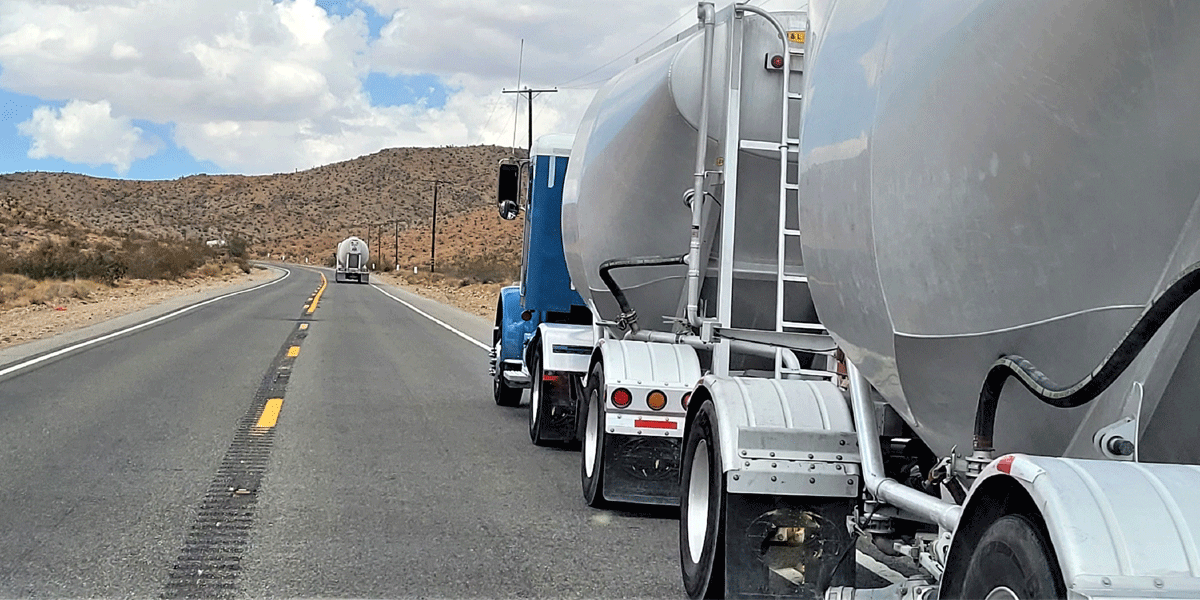Lars has been in the trucking industry his whole working life. He started working in the shop when he was just 16 years old. Lars spent about 10 years in operations before moving to driver recruiting. He spent five years in recruiting before joining the ATS team as the vice president of driver recruiting. He currently serves as the vice president of van operations. No day is ever the same in the trucking industry and Lars enjoys the challenge that presents.
Revised November 11, 2025
If you've ever applied for an over-the-road (OTR) truck driving job, you've likely seen something like this: "Six months OTR experience required," or "One year of OTR experience required." You might've then asked yourself: "How do I build experience when I need experience to get started?"
You aren’t the only driver who’s asked this question. In fact, as vice president of driver recruiting at Anderson Trucking Service (ATS), it's a question I encounter regularly.
Success in OTR truck driving starts long before you take the wheel. With the right preparation, professional driver training, and a commitment to safety, you'll gain the confidence and experience needed for a rewarding career in long-haul trucking. Invest in your skills early, and you'll pave the way for a fulfilling journey that offers both freedom and stability.
Key Points to Consider for Over-the-Road Experience
- Everything starts with getting (and maintaining!) your Commercial Driver's License (CDL).
- OTR trucking is the foundation of many professional drivers' careers, and involves logging long, interstate routes.
- With solid OTR experience, you can qualify for better-paying, specialized divisions, like flatbed or heavy haul.
- Look for company-sponsored training programs or mentorships.
Before we get too ahead of ourselves, let's start with the basics.
What Is OTR Truck Driving?
It's life on the road. It's essentially living in your truck.
Unlike driving local or regional routes where you're in familiar territory and can expect to be home weekly (if not daily), over-the-road truck drivers log longer distances across states and are generally on the road for weeks at a time.
It takes resilience and preparation.
Spending long stretches away from home is one of the biggest adjustments for new drivers. Between unfamiliar routes, varying weather conditions, and long hours behind the wheel, it can be easy to become flustered or fatigued. That's why building experience with longer hauls is so important. It shows carrier companies that you're responsible and ready for the OTR lifestyle while keeping you safe, confident, and ready for whatever the road brings your way.
How to Get OTR Driving Experience
The effort you put in early makes all the difference later, so let's get into how you can start building your OTR experience today.
- Get your Commercial Learner's Permit (CLP): Just like earning a non-commercial learner's permit, this involves a few steps:
- Passing a written test at a Department of Motor Vehicles (DMV) location (must present valid driver's license, social security number, and proof of residency)
- Passing a Department of Transportation (DOT) physical and vision exam
- Do your research: Find a reputable carrier company that will either pay for your trucking school upfront or reimburse you for your Commercial Driver's License (CDL) training. You can also pay for your own schooling at local truck driving schools.
- Choose your training program: Most CDL programs take four-12 weeks and follow one of two common models:
- Team-Driving Programs: The trainer and student operate as a team, alternating between driving and resting
- Observation Model: The student does all the driving while the trainer observes and provides feedback
Whenever you can, choose a company that follows the observation model. You'll gain more seat time, personalized feedback, and stronger confidence behind the wheel, which sets you up to drive solo sooner and succeed in your new career.
- Whether training through a company-sponsored program or a school, you want to make sure the training covers trip planning and safety fundamentals, while getting you plenty of time behind the wheel. That way, you'll be fully prepared for your CDL test.
- Drive safely & track your experience: With CDL in hand, once you get on the road, focus on safety and reliability. Maintain your truck and avoid violations. Keep copies of pay stubs, driving logs, and/or employer verification letters. These documents are essential proof of your OTR experience when applying for your next opportunity.
How Much OTR Experience Do You Need?
Most carrier companies (including ATS) look for 6-12 months of verifiable OTR experience, particularly for more advanced driving positions and freight types. This range can vary depending on your safety record and whether you've logged miles solo or as a team.
Even if you're just starting out, a few months of over-the-road driving experience can give you an edge. Just focus on safe miles and learning new routes — marketable traits that carriers love in their truck drivers.

Last Stop: Why Build Your Over-the-Road Experience with ATS?
Anderson Trucking Service (ATS) has helped drivers build OTR experience and explore opportunities for growth since 1955. We understand that every driver's story is different, and we've designed our programs around helping you grow, earn more, and achieve your unique driving goals. Driving with ATS, you can expect:
- Industry-leading equipment and support.
- A clear path from entry-level to higher-paying opportunities like flatbed and heavy haul.
- Customer-direct freight: Freight is locked in and ready for you. No fighting over load boards.
Whether you're earning your first miles or you're ready for the next challenge, ATS gives you the path and the support to get there.
Contact an ATS recruiter to explore driver opportunities (ask lots of questions!) and start building your OTR experience today.

